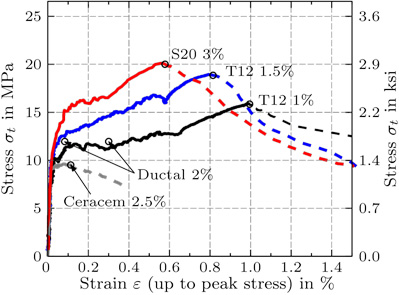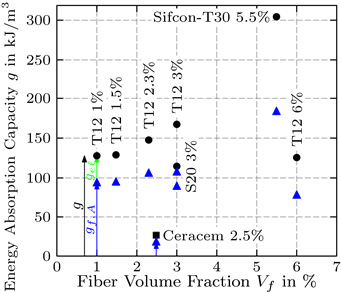Sherif El-Tawil, PhD, PE
Professor and Associate Chair
Department of Civil & Environmental Engineering | The University of Michigan
Ultra High Performance Concrete (UHPC)

Ultra high performance concrete (UHPC) is a specially formulated concrete that is capable of achieving extremely high performance. The objective of this project is to study the material, develop new methods for making it, characterize its mechanical performance and seek structural applications that can exploit its unique properties in an optimal manner.
UHPC is a specially formulated concrete that is capable of achieving extremely high performance. When properly reinforced with steel fibers, the material is capable of potentially achieving the following properties:
- High compressive strength, approaching that of mild steel.
- High tensile strength, several times that of regular concrete.
- Pseudo-ductility, with tensile softening strains of up to an order of magnitude greater than that of regular concrete.
- Exceptional energy absorption prior to fracture.
- Extremely small crack widths, small enough to effectively eliminate ingress of chlorides.
- Exceptional durability, primarily enabled by the very small crack widths and the extremely high density of the material.
- Self-consolidating properties, which simplify construction.
- Autogenous self-healing properties, enabled by the very small crack widths.
Construction using proprietary UHPC materials requires specially certified contractors and costly construction processes, such as pressure or heat treatment, which are impractical to achieve in the field. High material cost coupled with complicated and costly construction procedures have hindered widespread adoption of UHPC in the US.
An alternative UHPC developed at the University of Michigan has the potential for removing many of the obstacles preventing widespread use of UHPC in the State of Michigan and in the US. In addition to the basic 8 properties listed above, this new material has 3 new critical advantages:
- Substantially greater pseudo-ductility, up to an order of magnitude greater than commercially available materials.
- It is nonproprietary and made up of components that are available on the US market.
- Does not require expensive heat or pressure treatment as Ductal and other commercial material do. In fact, it can be conveniently made, which reduces adoption costs dramatically and allows the material to be commercially made and delivered the same way as regular concrete.
Figure 1 shows the material being made, while Figure 2 shows the tensile behavior of the UM material compared to other patented materials. Figure 3 shows the energy absorbing capability of the new material. Acknowledgement: This research was conducted in collaboration with Prof. Tony Naaman at UM and Kay Wille of the University of Connecticut [link].

Figure 1: Mixing of UM UHPC.

Figure 2: Comparison between tensile response of UM-UHPC and other patented materials.

Figure 3: Energy absorbing capabilities of UHPC.